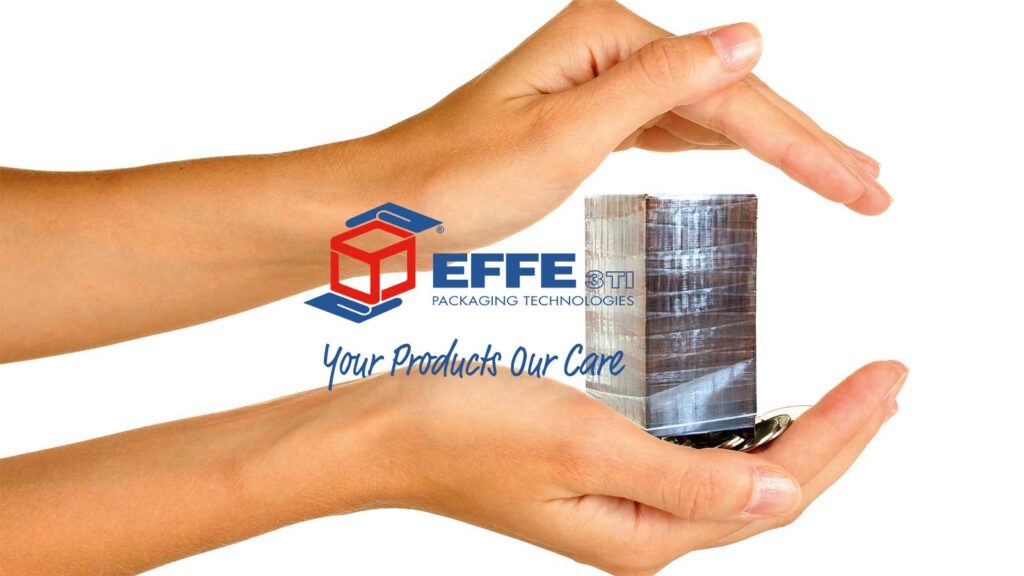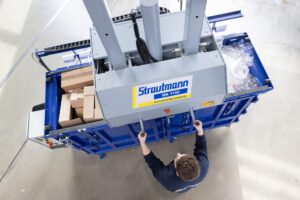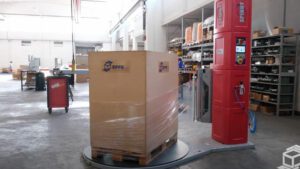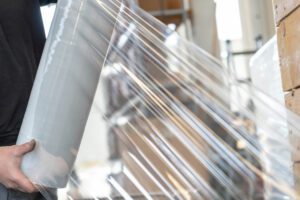Attending a trade show is the best opportunity to meet customers and retailers, learn about issues, and see what's new.
During recent international fairs in Spain, Romania and Italy, we have met many people and met many different realities. There are always many requests that arrive at the fair and also this year we have noticed, and not without a certain surprise, that one of the common "problems" of our customers is the manual wrapping of product pallets.
If wrapping manually may seem like a savings at first glance… we’re sorry, we have to disappoint you.
Sure, you can do a good job. You don't have to use a forklift to get the pallet to a machine. So why spend money if you don't have to?
But have you really considered all the details of this type of work?

Hidden Cost #1: Damaged Products Are Expensive
Humans are not machines. Anyone who wraps your pallets manually will never be able to do the job exactly the same way every time.
A pallet wrapped by one operator on Monday morning cannot be wrapped in the same way by another operator on Friday afternoon.
So manual wrapping will not give you consistent and uniform applications over time.
This could lead to unsafe loads, resulting in possible damages to your products.
And while we're on the subject: did you know that if stretch film is actually stretched, it becomes more resistant to tearing and punctures? Stretching makes the material stronger and also increases its efficiency in containing and stabilizing products on pallets.
Manual wrapping will never give a result even remotely similar to what can be obtained from a machine.
Hidden Cost #2: Work Comes at a Price
Wrapping a pallet manually is necessarily a much more intense work of what you will have to do by entrusting it to a machine.
When paying for your employees' work, is hand wrapping the best use of their time?
What other tasks might your operators be performing while a machine is winding?
Would you need the same number of employees?
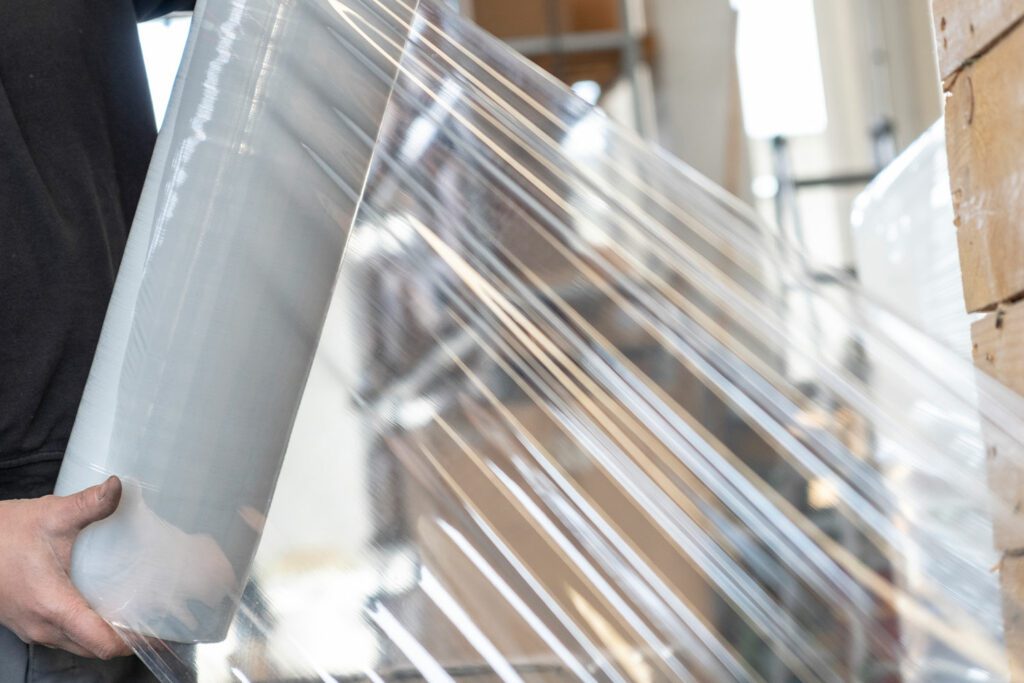
Hidden Cost #3: Health and Safety
Hand wrapping requires a lot of bending, twisting and pulling by the operator to ensure the entire pallet is completely wrapped. Repetitive tasks can cause fatigue and injuries.
Injuries mean accidents and consequently absences from work.
Hidden Cost #4: Have You Considered the Materials?
Did you know that modern wrapping machines can easily stretch the 250% film before applying it to the pallet and with appropriate precautions even up to beyond 400%?
When you compare this to a 10-50% extension obtainable with manual winding we can see how much you can save on the cost of the material. By wrapping by hand you are probably using significantly more film than necessary.
And how many rolls of stretch film do you throw away because they have been dented or damaged when thrown on the ground or left lying around? This cost can sometimes be as high as 15-20% of the costs of hand wrap.
Hidden Cost #5: Productivity
Manual wrapping is very time consuming. A stretch film machine is generally much faster than an operator, increasing overall throughput (and consistency of operation and optimal material utilization). With manual wrapping you are not working as fast as you can, which is a cost.
Hidden Cost #6: What Does the Customer Perceive?
Wrapping a pallet with a stretch film machine produces a clean and uniform finished product. Hand-wrapping pallets can result in uneven, messy pallets (not to mention potentially damaged product). The appearance of the pallet load from the customer affects the image of your company. Hand packing can make your company look low-end. Loss of credibility.
Global Cost: Have You Thought About the Planet?
Every day we are bombarded with distressing images that show us the sea of plastic that submerges us. Plastic is everywhere, plastic is used to produce and protect everything. The planet is undoubtedly suffering and we are all called to do something.
Us we produce machines that use plastic, but we also want to stay aware of what is happening in the world and the ecological innovations in the sector.
Protecting products on pallets by wrapping them with stretch film is undoubtedly a pollution that can be reduced by using devices that can limit the use of plastic as much as possible.
Less film = less plastic = less emissions = LESS POLLUTION.
In this article we have highlighted a series of points against manual wrapping and last but not least, we want to highlight that it is a decidedly anti-ecological method.
Saving money and doing something for our planet is a great solution, don't you think?
